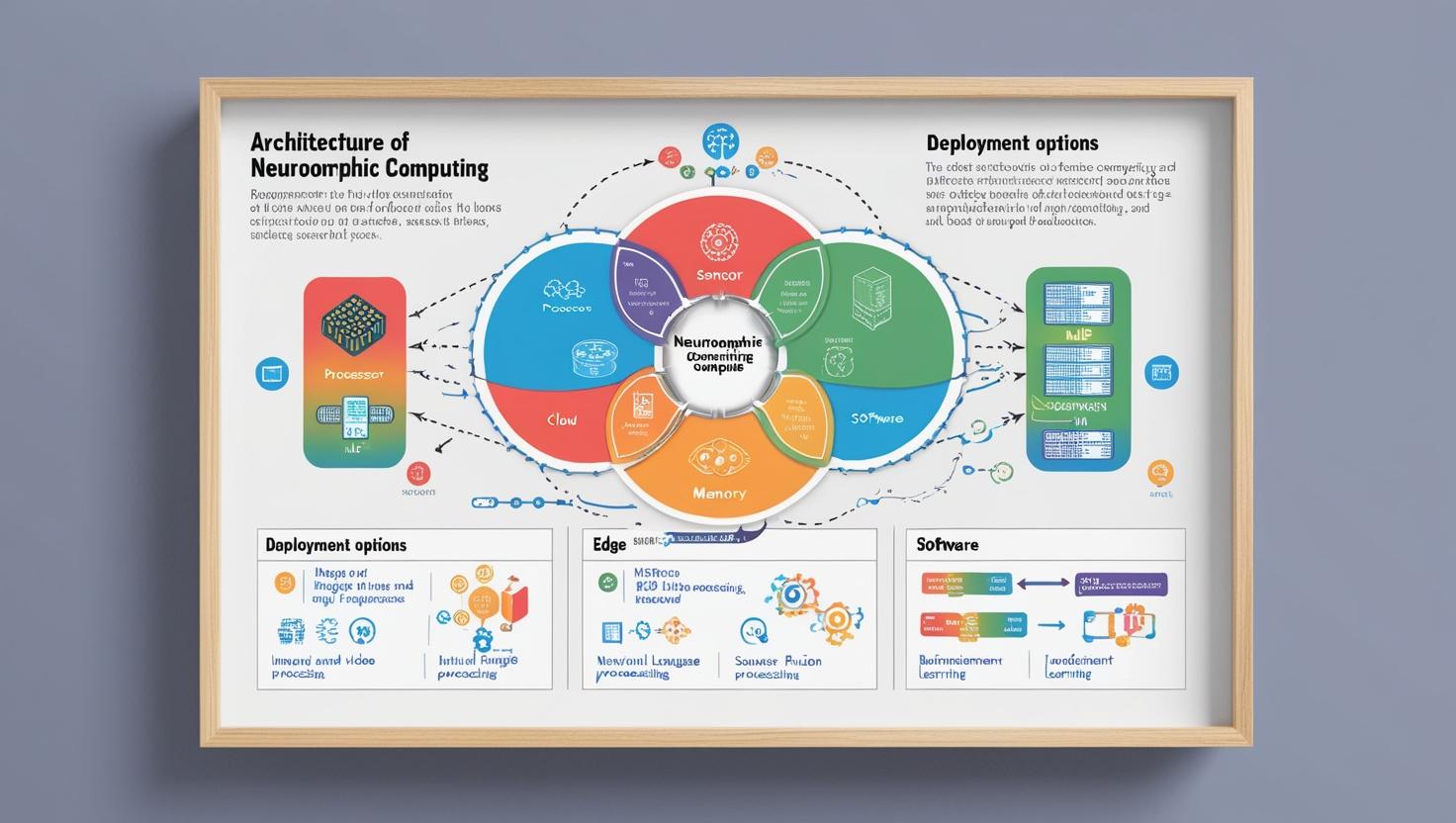As the artificial intelligence (AI) revolution continues to reshape industries, a new class of hardware is emerging to meet the growing demand for faster, more efficient, and brain-like computing. Neuromorphic computing—an approach that mimics the structure and function of the human brain—is poised to become one of the most transformative technologies of the next decade. With rising adoption across sectors like robotics, edge computing, autonomous systems, and defense, the neuromorphic computing market is set for exponential growth.
What Is Neuromorphic Computing?
Neuromorphic computing refers to the design of computer systems that emulate the neural architecture and functioning of the human brain. Unlike traditional von Neumann architectures, which separate memory and processing units, neuromorphic chips integrate computation and memory in a distributed, parallel fashion—similar to neurons and synapses in biological brains.
These chips process information using spikes (like neurons firing), enabling ultra-low-power, event-driven data processing. As a result, neuromorphic systems excel at tasks like pattern recognition, sensory data analysis, decision-making, and learning in real time—all with dramatically lower energy consumption than conventional processors.
Download PDF Brochure @ https://www.marketsandmarkets.com/pdfdownloadNew.asp?id=227703024

Key Drivers of Market Growth
1. Rising Demand for Edge AI Solutions
As more devices—from smartphones to industrial sensors—require local intelligence, there’s a growing need for energy-efficient, real-time processing at the edge. Neuromorphic chips, with their ultra-low-power profile and fast inference capabilities, are ideally suited for edge AI. They eliminate the latency and bandwidth challenges associated with sending data to the cloud for processing.
2. Advances in AI and Machine Learning
Traditional processors (CPUs and GPUs) struggle to keep up with the complexity and resource demands of modern deep learning models. Neuromorphic computing offers a path toward more efficient and scalable AI by enabling continual learning, sparse computation, and on-chip training—making AI more adaptive, especially in dynamic environments.
3. Growing Adoption in Robotics and Autonomous Systems
From self-driving cars to industrial automation, neuromorphic computing is finding a home in systems that require fast perception, low latency, and autonomy. Its ability to process multimodal sensory data (like vision, sound, and touch) in real time is critical for intelligent decision-making in robotics and unmanned systems.
4. Government and Defense Investment
Several national governments and defense agencies are investing heavily in neuromorphic research due to its potential in surveillance, cybersecurity, and autonomous warfare. Initiatives like DARPA’s SyNAPSE program have already paved the way for breakthroughs in neuromorphic chip development.
Market Outlook and Forecast
The neuromorphic computing industry is expected to grow from USD 28.5 million in 2024 and is estimated to reach USD 1,325.2 million by 2030; it is expected to grow at a Compound Annual Growth Rate (CAGR) of 89.7% from 2024 to 2030
Key contributing sectors include:
-
Consumer Electronics
-
Automotive (ADAS and autonomous vehicles)
-
Healthcare (neuroprosthetics and diagnostics)
-
Defense and Aerospace
-
Industrial Automation
-
Smart Cities and IoT
Leading Players and Innovation Landscape
Several tech giants, research institutions, and startups are racing to bring commercial neuromorphic chips to market. Notable players include:
-
Intel (with its Loihi neuromorphic processor)
-
IBM (developer of the TrueNorth chip)
-
BrainChip (creator of the Akida processor)
These companies are not only developing hardware but also investing in specialized software frameworks to support neuromorphic applications—bridging the gap between brain-inspired architecture and real-world implementation.
Challenges Ahead
Despite its promise, neuromorphic computing faces hurdles. Standardization is still evolving, and developing software that fully leverages neuromorphic hardware remains complex. Integration with existing AI workflows and tools is another barrier. However, as interest grows and ecosystems mature, these challenges are likely to be overcome through cross-industry collaboration and open-source development.
Conclusion: The Brain-Inspired Future of AI
The exponential growth of the neuromorphic computing market is more than a trend—it reflects a fundamental shift in how we think about computation in the AI era. As the demand for intelligent, adaptive, and low-power systems rises, neuromorphic computing will play a central role in the next wave of innovation.
From enabling smarter robots and autonomous vehicles to redefining how machines learn and process information, this brain-inspired approach holds the key to unlocking truly intelligent systems—and it’s only just beginning.
